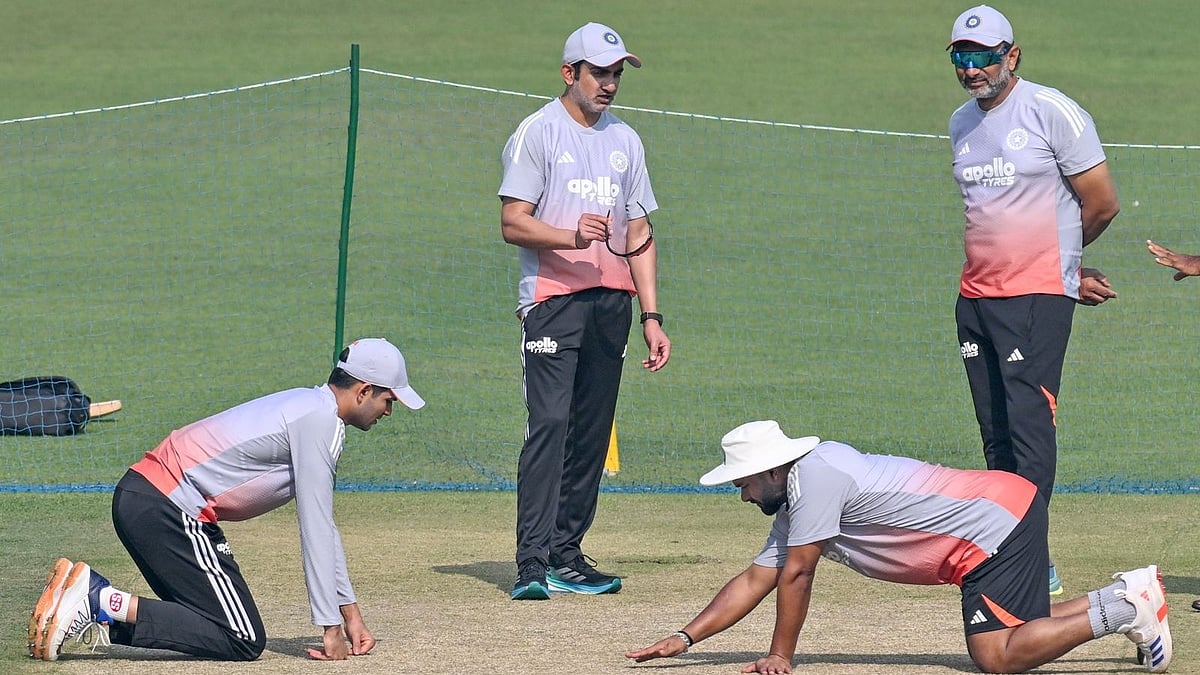Sports
Do Shubman and Gambhir think alike on what makes an ideal home pitch?
India’s dismal 30-run defeat to South Africa has mushroomed into a far larger debate than a single Test match loss

India’s dismal 30-run defeat to South Africa — a failure to chase a modest 124 — has mushroomed into a far larger debate than a single Test match loss. It has laid bare an uncomfortable question at the heart of the team’s leadership: are young captain Shubman Gill and head coach Gautam Gambhir even aligned on what constitutes appropriate home conditions?
The collapse, India’s lowest unsuccessful home chase, exposed fissures far deeper than anything a parched Eden Gardens square could hide.
Only a month ago, on the eve of the West Indies Test series in Ahmedabad, Gill had confidently declared that the team had abandoned the obsession with preparing “rank turners”.
“…we would be looking to play on wickets that offer both to the batsmen and to the bowlers,” he said then, presenting a vision of even-handed, competitive surfaces.
Yet when India walked out against the reigning World Test champions, they found themselves on a track that stood in direct opposition to their captain’s stated philosophy.
The Eden pitch had gone unwatered for more than a week and was cloaked under covers each evening, producing a brittle, dusty surface that crumbled from the opening session. The match barely stretched into an eighth session, yielding 38 wickets — 22 to spinners, 16 to pacers.
If India had truly moved away from rank turners, Eden suggested that someone had missed the memo. Gambhir, for his part, offered no apology. He was forthright that the pitch reflected exactly what the team management had sought. "If you don't play well this is what happens. There were no demons in the wicket," he said.
Published: undefined
Ask Aiden Markram, beaten by a Jasprit Bumrah delivery that exploded from the off-stump line in the first hour, or K.L. Rahul, undone by a Marco Jansen ball that bounced spitefully in the fourth innings — and one would hear a very different assessment.
Gambhir maintained, instead, that seamers were the real threat. "Ultimately, if we had won this Test match, you wouldn't even be talking about this pitch," he said in his characteristically combative tone.
But the communication gap is stark. Gill envisioned balance. The coach wanted precisely what unfolded. Gill himself missed the majority of the match owing to neck spasms that required hospitalisation — an injury that now casts doubt over his participation in the second Test in Guwahati on 22 November.
His involvement ended on day one after he jarred his neck playing a slog-sweep for four off Simon Harmer. Without him, India’s batting line-up showed neither discipline nor the adaptability conditions demanded.
India have now lost four of their last six home Tests — an extraordinary reversal for a side once considered almost untouchable in its own conditions. Under Gambhir, India have won eight of 18 Tests, four of those against the comparatively weaker Bangladesh and West Indies.
The narrative bore uncomfortable similarities to last year’s 0-3 capitulation at home to New Zealand, where Ajaz Patel (11 wickets in Mumbai) and Mitchell Santner (13 in Pune) ruthlessly exposed India’s vulnerabilities on turning pitches. That series derailed India’s World Test Championship campaign; the Eden defeat feels ominously similar.
This latest loss has upended the WTC standings as well. South Africa surged to third with two wins from three; India slipped to fourth with only two victories in eight matches in the new cycle.
Published: undefined
From the moment India arrived in Kolkata last week, scrutiny centred obsessively on the surface. Meetings with curator Sujan Mukherjee became almost ritual. For a venue steeped in iconic Test history — none more celebrated than the 2001 Laxman-Dravid miracle — Eden offered a pitch that even Harbhajan Singh publicly condemned. "They have completely destroyed Test cricket. RIP Test cricket," he said.
Cheteshwar Pujara scoffed at suggestions that a transition phase provided any excuse. "Losing at home cannot be accepted, transition or not," he said.
India had the advantage at stumps on day two. South Africa were 93 for 7 — effectively 63 ahead — with skipper Temba Bavuma on 29 (off 78 balls) and debutant Corbin Bosch on 1.
Kolkata mornings typically favour seam, aided by a cool breeze off the Ganges. Common sense suggested Bumrah should begin from the Club House End, where he had taken a five-for in the first innings. Instead, he appeared only in the ninth over from the opposite end. By then, Bosch was settled, Bavuma entrenched, and the lead had drifted beyond the psychologically potent 100-run mark, with Bavuma’s unbeaten 55 eventually proving decisive.
This defeat was no isolated collapse. It exposed muddled tactics, an over-engineered surface, and a batting order ill-equipped to withstand either.
After Guwahati — where India cannot now win the series regardless of outcome — the team will not play another home Test until the Border-Gavaskar Trophy in January 2027.
Before then, they face tours of Sri Lanka in August and New Zealand in October next year. Their World Test Championship path has narrowed sharply — and this defeat may well define the shape of the campaign to come.
Inputs from Tapan Mohanta/PTI
Published: undefined
Follow us on: Facebook, Twitter, Google News, Instagram
Join our official telegram channel (@nationalherald) and stay updated with the latest headlines
Published: undefined